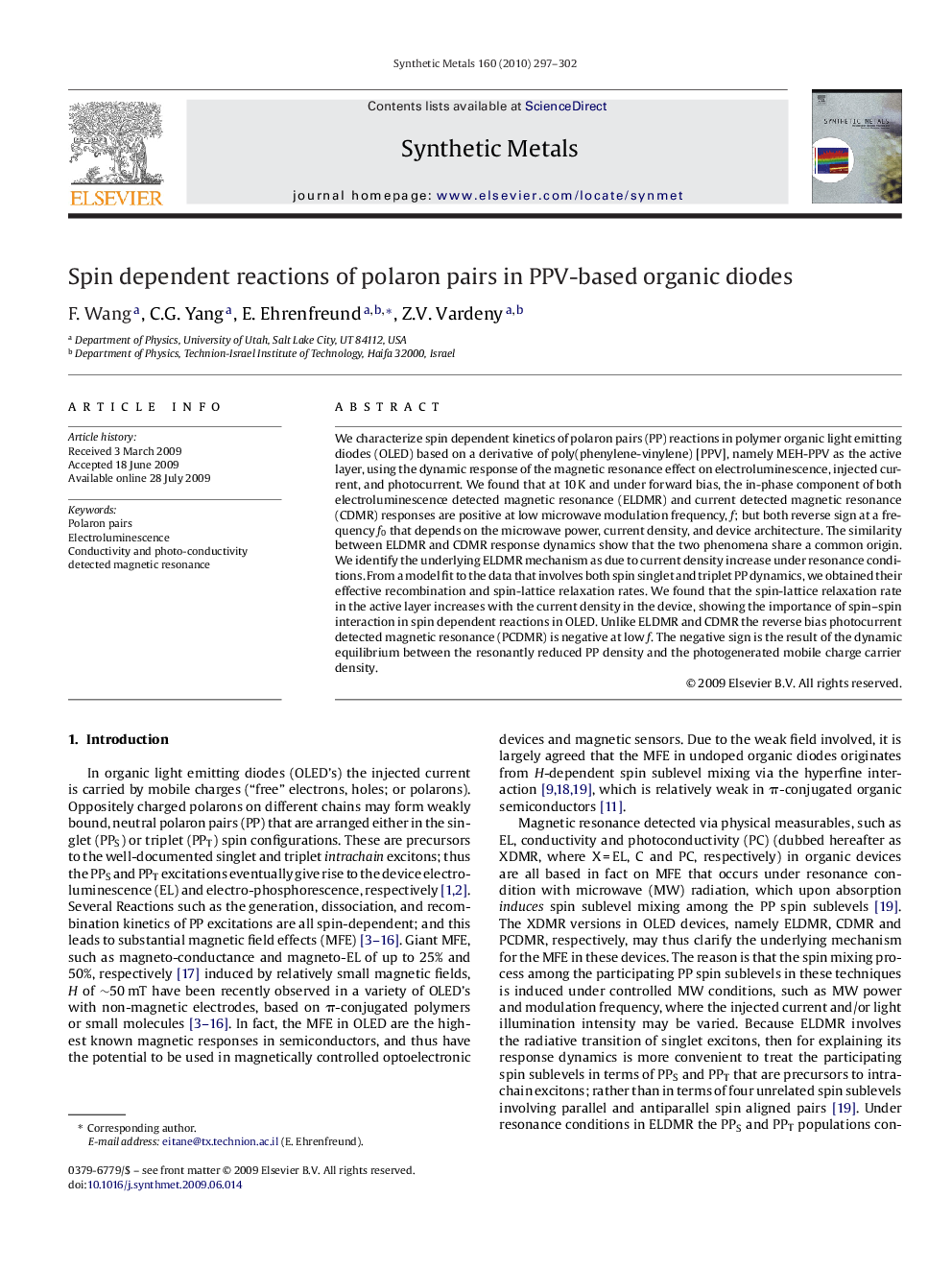| Article ID | Journal | Published Year | Pages | File Type |
|---|---|---|---|---|
| 1442930 | Synthetic Metals | 2010 | 6 Pages |
We characterize spin dependent kinetics of polaron pairs (PP) reactions in polymer organic light emitting diodes (OLED) based on a derivative of poly(phenylene-vinylene) [PPV], namely MEH-PPV as the active layer, using the dynamic response of the magnetic resonance effect on electroluminescence, injected current, and photocurrent. We found that at 10 K and under forward bias, the in-phase component of both electroluminescence detected magnetic resonance (ELDMR) and current detected magnetic resonance (CDMR) responses are positive at low microwave modulation frequency, f; but both reverse sign at a frequency f0 that depends on the microwave power, current density, and device architecture. The similarity between ELDMR and CDMR response dynamics show that the two phenomena share a common origin. We identify the underlying ELDMR mechanism as due to current density increase under resonance conditions. From a model fit to the data that involves both spin singlet and triplet PP dynamics, we obtained their effective recombination and spin-lattice relaxation rates. We found that the spin-lattice relaxation rate in the active layer increases with the current density in the device, showing the importance of spin–spin interaction in spin dependent reactions in OLED. Unlike ELDMR and CDMR the reverse bias photocurrent detected magnetic resonance (PCDMR) is negative at low f. The negative sign is the result of the dynamic equilibrium between the resonantly reduced PP density and the photogenerated mobile charge carrier density.
